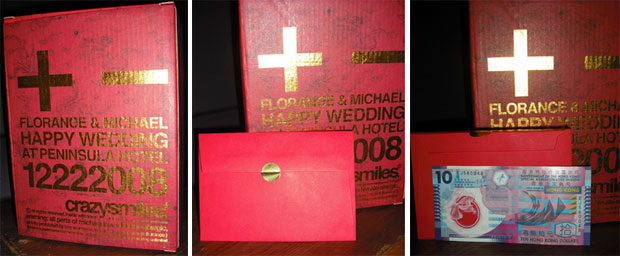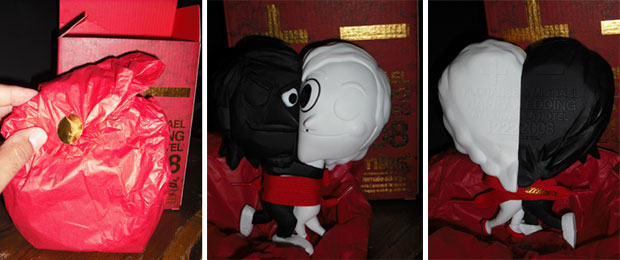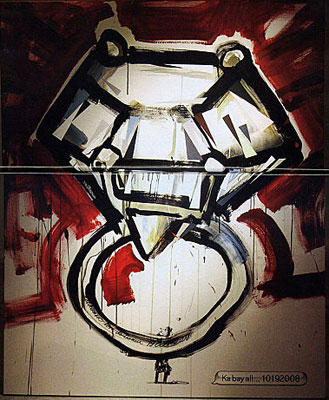Street Fighter was celebrating 25 years and I was stuck trying to find the words for how momentous this occasion was. It was important to me personally and represented an important era to my family and friends. Those that grew up in the arcades knew how popular the game was. Through the 90's there was no arcade title that seemed bigger than Street Fighter II, so when it arrived on the home consoles then the 16-bit era had truly arrived. The game not only made money for Capcom but it also marked the company as a global trendsetter. Street Fighter became part of pop culture, not solely in the US or Japan but the world over. During the next 25 years Street Fighter would define the arcade experience and be referenced again and again in art, music and even fashion. Whenever a comic book or a cartoon wanted to reference a fighting game then Street Fighter was the template most often used. In later years anime, manga and comic books began using the character designs, poses and even special attacks from the game in their own respective titles. Audiences would pick up on every subtle or bold use of the Street Fighter mythology featured in pop culture. The influence of Street Fighter on an entire generation was now impossible to be ignored. Fans of the series would continue to spread their fondness of the title for future generations in everything they created.

Two of the best animation directors working today were fans of the Street Fighter series and had recently created a love-letter to the game and the arcade culture. Alex Hirsch was the creator of Gravity Falls, a new cartoon on the Disney XD channel. Recently he directed an entire episode around arcade gaming. It brought iconic scenes and characters to life, especially those based on the Capcom classics. Disney brought in a guest animator for the episode, Paul Robertson, the Australian animator known best for Pirate Baby's Cabana Battle Street Fight 2006. Paul was also the animator for the multiplayer game Scott Pilgrim vs the World.

Paul knew every nuance in gaming and was able to translate the Scott Pilgrim comics into a game that played as well as the best multiplayer Capcom brawlers. In fact the entire Scott Pilgrim mythos was based around a hero fighting different types of opponents, basically a romantic comic book-meets-Street Fighter mashup. Alex and Paul managed to craft an episode of Gravity Falls that was nothing short of perfect for fighting game fans.

The episode Fight Fighters captured the essence of gaming perfectly. It was not the first popular cartoon to do that however. The tradition goes all the way back to Moaning Lisa, an early Simpson's episode that parodied video boxing (Mike Tyson's Punch Out) as well as When Flanders Failed and Marge be not proud which took liberties with the fighting game genre. It stood to reason that Gravity Falls could be compared to the early seasons of the Simpsons. Alex stated that his series was inspired by his three favorite shows while growing up; The Simpsons, Twin Peaks and the X-Files. Those three had influenced the comedy and conspiracies featured in Gravity Falls. The Simpsons' undoubtedly left the biggest impression on a young Hirsch. His show revolved around the twins Dipper and Mabel Pines, the siblings were very relatable, just like Bart and Lisa Simpson. The main characters were actually based on Alex and his sister Ariel. Even Great Uncle (Grunkle) Stan was based on their actual grandfather. These relationships made the writing and character developments far more sincere and dynamic than just about any other show on the air. What Alex has been doing all season has been nothing short of genius. He was weaving personal history, mythological characters and conspiracies into a solid continuity that could hold its own with every other great fictional universe. Where the show excelled was when he voiced the things that influenced him the most.

The second arcade boom, post Street Fighter II was celebrated in the Fight Fighters episode. Alex voiced the character of Soos and acted as equal parts sidekick and mentor to Mabel and Dipper Pines. When Soos pointed out something that he loved it was actually Alex reflecting on his life to audiences. Soos introduced the Pines family to the local arcade, this must have meant a lot to Alex. Eagle-eyed viewers could spot the mysterious pyramid logo playing on one of the arcade screens. The entire mythos of the series, the use of occult symbols and the strange occurrences around Gravity Falls were left open to interpretation. Clues, puzzles and messages were constantly being hidden in the show for viewers to find and decipher. Could the pyramid icon be being used to brainwash arcade goers? This tiny clue might come back later on in the series, but I digress…

Soos showed off the games that taught him some very important lessons, including how to safely cross the street and how to eat ghosts. The parallels to Frogger and Pac Man from Frog Time and Ghost Maze were obvious to older gamers. It was apparent how important the arcade was to Alex as the cabinets and game screens are carefully recreated for the episode.

Other nods to classic gaming and even the Disney / Pixar legacy were right in the opening moments of the episode. The Claw could be referencing the gag from the Toy Story films, Pizza Time is a send up of Burger Time and NORT was advertised as "The game based on the movie based on the game" clearly a reference to TRON. Instead of light cycles the game featured a neon colored Segway scooter. The parody was done in good taste but of all the games there was one which for which the entire episode was based around.

Off in a corner of the arcade Dipper was playing a game called Fight Fighters with his co-worker Wendy. The brightly colored characters, the special attacks, energy meters, everything in the game seemed eerily familiar to fans of Street Fighter II. This game, like the others, were presented as if Alex were recollecting the bits and pieces that he remembered from visiting an arcade as a kid. The games were not 1-to-1 copies of existing titles but instead impressons of the most popular.

It was impossible to ignore all of the details that Paul Robertson put into Fight Fighters. From a character select screen featuring a cast of global fighters…

To the dramatic and sometimes nonsensical cut scenes...

To the actual game itself featuring very familiar special attacks and characters.

This was easily the best recreation of Street Fighter ever done for animation. There was an absurd amount of detail placed on the art, animation and characters for this fictional game. Long-time fans of the series could actually point out all the individual details that inspired both Alex and Paul.

The cabinet art featured a very familiar font style and character. The design of "Rumble McSkirmish" was based on the three oldest Street Fighter icons, Ryu, Ken and Sagat. Even the uppercut pose was based on the original art from Japan.

The villain of the game, "Dr. Karate" had elements from M. Bison (Vega in Japan), Guile and Kano from Mortal Kombat.

Robbie, the boyfriend of Wendy, showed up at the arcade and caused trouble for Dipper. The young Pines was challenged to a fight later that day. Not sure how to fight, and being much smaller than Robbie, Dipper began searching for a way out of the battle. He decided to hide out at the arcade and play a few more rounds of Fight Fighters. When he dropped his quarter he discovered a secret code etched into the bottom of the cabinet. He managed to unlock a living version of Rumble McSkirmish by entering the "Ultimate Power" code on the game. Dipper then recruited Rumble to fight Robbie in his place.

The mistranslations and hidden codes for Fight Fighters were based on the urban legends that shaped the development of Street Fighter II. Sheng Long was the dragon punch that Ryu used, many gamers thought it was the name of his master. EGM created an infamous April Fool's article saying how to unlock Sheng Long, this joke eventually lead to the creation of Akuma / Gouki. This ultimate boss could actually be unlocked in the game as a playable character. If the gamer entered a secret code on the character select screen then Akuma would be available. This code was unknown to most arcade visitors, making the character even more mysterious.

The rest of the episode was hijinks as Rumble managed to thrash most of Gravity Falls with his pixelated fists. The episode was an amazing homage to gaming and game culture. Nods to Final Fight were peppered throughout the episode. For example Rumble walks down the street swinging a pipe, when Dipper tells him to put the pipe away he does and swaps it for a samurai sword. Dipper wonders who would leave such dangerous objects laying around. Of course these things made tremendous sense in the street brawling game Final Fight, which was originally called Street Fighter '89. When an actual person pulls a street sign out of the ground or beats up mail boxes and trash cans then pedestrians run for cover.

Rumble chased down Robbie and threw him out of an apartment building. This sets up the character for an amazing Donkey Kong inspired sequence.

All sorts of gaming related icons appeared throughout the episode. Points, health bars and even giant flashing two-dimensional arrows saying "Go" appear out of thin air and prompt the characters to continue. Paul Robertson recreates the conventions of the 2D brawler with ease. Several gags featured in the episode had me laughing out loud. The often misheard special attack "Shoryuken" was used when Rumble punched a bbq smoker while yelling "All-You-Can… Eat!"

Rumble happened across a car that was parked on a dock. This set up the infamous car smashing Bonus Round featured in both Final Fight and Street Fighter II.

I just about died when the owner of the car doubled over and repeated the phrase "OH! MY CAR"

Those old enough to remember (like my friends and I) or visited an arcade with a Japanese version of Final Fight saw a different phrase altogether.

Rumble eventually cornered Robbie in the park but before he could beat him up Dipper came to his aid. Dipper ended up fighting Rumble after revealing his true motives for summoning the character. This lead to Dipper getting severely trounced by the most ultimate special attack ever conceived, the "Super Power Ninja Turbo Neo Ultra Hyper Mega Multi Alpha Meta Extra Uber Prefix Combo."

The devistating move was based on the Shun Goku Satsu.

After getting thrashed Dipper was left a little more humble. He was presented with the ending screen to Fight Fighters. Those that frequented arcades knew the importance of being able to have a top score posted on the leader-board. Those with the coolest initials always stood out and "DIP" was no exception. The ending of the episode was well done. It reminded gamers of a simpler time. Before the internet, before web matches, when the best gamers had to show and prove at a central location. Friendships were made and rivalries forged in the arcade. The goal for most players was to reach the end screen on one quarter and get their name on the board.

Having Dipper and Soos stand in awe of the floating initials was a nice touch. Again it was Alex and Paul reflecting on the arcade experience. They were showing audiences that players didn't always win every arcade game but the battle was always worth it. Those that have been with Street Fighter since the first game would agree. Those early gamers did not win every fight but they kept coming back. They lost a lot of matches while trying to master the gameplay and did not find reason to complain after losing a hard fought battle.

Street Fighter might not have made it to a 25th anniversary if not for the recent sequels. Street Fighter IV and Street Fighter X Tekken kept the series relevant over the past four years. Those games showed the industry that the fighting genre was not dead, in fact it was simply waiting for a renaissance. Street Fighter IV revived the audiences that had pumped millions of quarters into the arcade cabinets a decade earlier. These patrons were now adults, working professionals, artists, writers and parents raising a new generation of gamers. They passed onto this new group the love of Street Fighter, the love of the series, the characters and challenge. Alex Hirsch and Paul Robertson were sharing that love with fans of Gravity Falls as well. They were celebrating the 25th anniversary in their own way. It would not be the last time that Disney would highlight the importance of the series on an entire culture.
The upcoming animated feature Wreck-It-Ralph would feature cameos from the Street Fighter cast. The characters were not inserted into the film for the sake of a shout-out but because they actually pushed the plot along. The characters meant something to game history. After 25 years they were more than relevant to gamers; they were important. Wreck-It-Ralph would have been lacking if Disney ignored the contribution of Street Fighter to gaming. When the studio referenced the game twice in one year was proof that the series had influenced the world in a profound way. Including a few Street Fighters in a high-profile and expensive feature was the biggest sign of respect that Capcom could have gotten during the anniversary.

Capcom should be proud of the series. Very few games had changed the world, very few games had united as many gamers. Here's to 25 years of great memories and the hope that there are many more great battles to come!
PS. Those interested in catching the Fight Fighters episode should tune into Gravity Falls, Friday night Sept. 14 on Disney XD. If you would like to sponsor me please visit my Patreon page and consider donating each month, even as little as $1 would help make better blogs and even podcasts!





